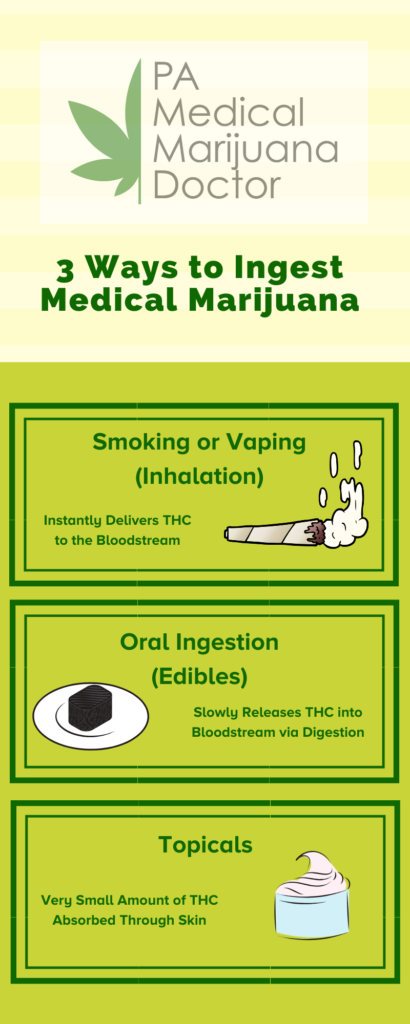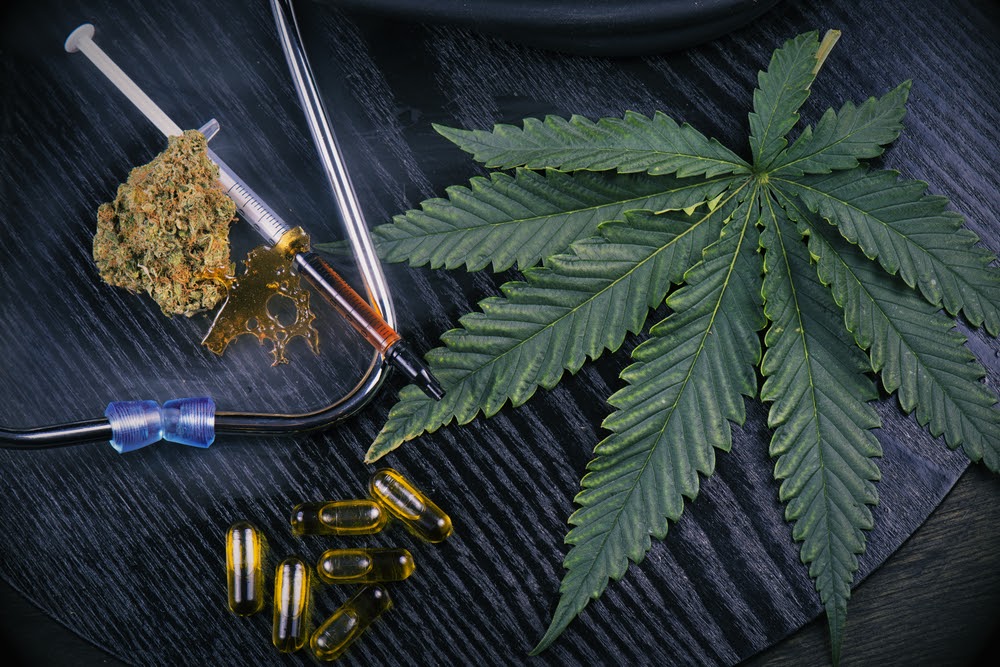When it comes to ingesting medical marijuana, there is no single “best” method of ingestion — it all depends on your unique medical needs, and how your body responds to each method of ingestion. Two people with the same health condition may prefer to ingest their medical marijuana in different ways but achieve virtually the same results. Before individuals from Philadelphia, PA, find out how to qualify for a medical marijuana card, they should look into the ingestion methods preferred by patients who have the same condition and a similar body type.
Let’s compare a few different methods of ingesting medical marijuana to determine what will work best for your medical needs. Check out this infographic, then continue reading below:

Smoking or Vaping
Inhalation is one of the quickest ingestion methods for alleviating unpleasant symptoms that occur very suddenly, such as nausea, headaches, muscle spasms, and more. It takes a long time to digest and metabolize THC from edible products, so it wouldn’t make much sense to treat an unexpected migraine by eating your medical marijuana. Smoking and vaping are ideal methods for treating symptoms that need quick attention because THC is quickly delivered to the patient’s bloodstream.
Edibles
Prescription edibles with active THC are great for treating symptoms that may be stronger and more frequent than the symptoms generally treated by inhalation. Conditions that cause recurring issues like chronic pain, for example, may be treated best by THC that is digested, rather than inhaled. Edibles are like a slow-release medication, rather than fast-acting.
Topicals
Topical cannabis products differ greatly from medical marijuana that is inhaled or ingested, as topically-applied THC generally does not typically have psychoactive effects on the patient. Topical THC creams, lotions, and balms can be helpful for treating skin conditions, muscle pain, and more. Many topical THC products include essential oils and other ingredients that may create a warming or cooling feeling on the skin and muscles.
Contact PA Medical Marijuana Doctor to Learn How to Get a Medical Marijuana Card in Philadelphia, PA, and For More Information About Qualifying Medical Conditions.



